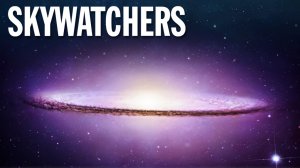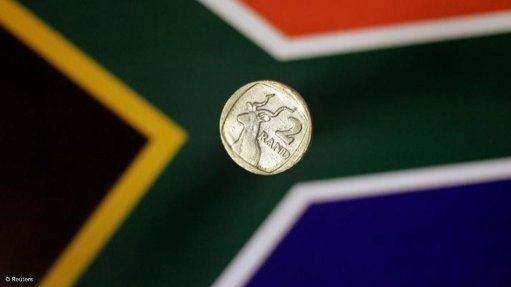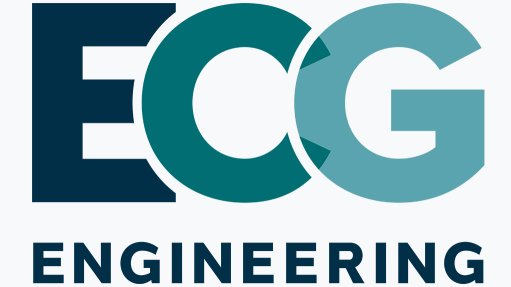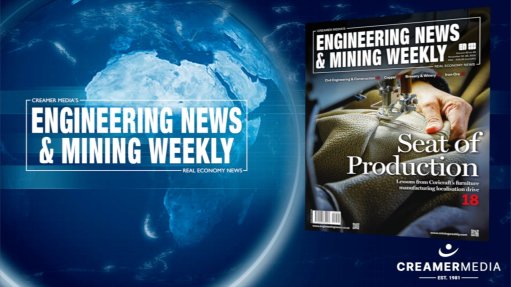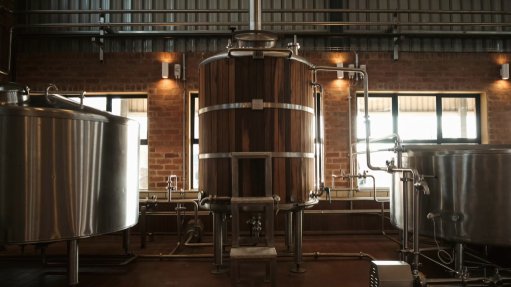South African Astronomical Observatory has added important capabilities this year
The South African Astronomical Observatory (SAAO), a ‘business unit’ of the National Research Foundation, is focused on optical astronomy and formally came into being in 1972, although it can directly trace its ancestry back to the Royal Cape Observatory, set up in Cape Town in 1820. SAAO’s head office still occupies the location of that ancestral institution, in the suburb of Cape Town named in its honour – Observatory. However, for the past 50 years, all its operating telescopes have been located near Sutherland, in the Karoo region in the Northern Cape province.
The Sutherland complex today hosts no fewer than 24 telescopes, although not all of these belong to SAAO. SAAO owns five, while also having a 50% share in the largest, the Southern Africa Large Telescope, and also co-owning another four. Of the remaining 14, 13 are owned by overseas institutions or agencies, and one by the South African National Space Agency. Many of these overseas telescopes are simply hosted by SAAO, but in some cases, it cooperates in their operation and research projects.
SAAO never stands still. Just this year alone, a new telescope and a major new instrument (mounted on an existing telescope) were assembled, installed, tested and commissioned. They were the Asteroid Terrestrial Impact Last Alert System (ATLAS) telescope, and the Mookodi spectrograph, installed on the 1-m-diameter Lesedi telescope (Lesedi, which started operating in 2019, is SAAO’s newest telescope). Both these programmes involved SAAO engineering as well as scientific expertise.
Atlas
The ATLAS telescope is particularly interesting in that it is an entirely overseas-owned and funded instrument, yet SAAO played the major role in setting it up at Sutherland and an SAAO astronomer, Dr Nic Erasmus, is assigned to the programme. The Sutherland instrument is one of four ATLAS telescopes, owned by the University of Hawaii, in the US, funded, and operated on behalf of, the US National Aeronautics and Space Administration. Two of the others are at separate sites in Hawaii, and the third is in Chile. The Hawaii telescopes cover the northern hemisphere, the South African and Chilean telescopes cover the southern hemisphere.
“The ATLAS telescopes are specifically designed to discover near-Earth asteroids that are on courses that could impact Earth,” explains Erasmus. (Near-Earth asteroids are asteroids whose orbits are close to Earth’s orbit or cut across Earth’s orbit, and so will, sooner or later, come close to Earth.) “They don’t form the only asteroid-detection telescope survey and they are also not the most sensitive, but they are designed to complement the other such surveys. For example, ATLAS sweeps more of the sky in a single night than the other asteroid-detecting surveys. As a result, while ATLAS does not necessarily see as deep into space, it covers a wider area of space and so is likely to pick up asteroids that the other suveys have missed. Its speciality, therefore, is to detect fast- moving small asteroids near Earth that ‘slipped through the net’ of the larger telescope surveys. To put it into context, a relatively small 100-m-diameter asteroid hitting the Earth wouldn’t remotely be an extinction-level event, but it could still cause serious localised damage and even death if the impact occurred close to a populated area. There are also significantly more 100-m-diameter near-Earth asteroids in our Solar System than extinction- level 10-km-diameter asteroids, so the likelihood of impact by a 100-m-diameter asteroid is also significantly greater.”
He cited the example of the 20-m-diameter asteroid which made an undetected approach to Earth in February 2013, exploding when it hit the thicker part of the atmosphere, some 30 km above the Russian city of Chelyabinsk. The explosion was 20 to 30 times more powerful than the atomic bomb which destroyed the city of Hiroshima in Japan in 1945. The resultant shockwave damaged some buildings and shattered a lot of glass in the city below. Some 1 500 people were injured, mainly by flying glass and debris.
As part of the arrangement under which SAAO hosts ATLAS, Erasmus was sent to Hawaii to be trained on, and learn all the details of, the existing Hawaiian ATLAS telescopes. Erasmus was chosen because he was already working on near-Earth asteroids (one of the few South African astronomers doing so) and had some instrumentation experience. The idea was that both the telescope dome and the instrument itself would be shipped, separately and sequentially to South Africa, and erected by American teams with the assistance of SAAO staff, led by Erasmus. It didn’t work out that way: the Covid-19 pandemic got in the way.
Although the telescope dome ‘kit’ safely arrived in South Africa, the US team could not come because of travel restrictions. So, the Americans proposed that the SAAO team assemble it, using the instruction booklet in the container. And Erasmus and SAAO technician Willie Koorts did so, although it proved to be more difficult, frustrating and time-consuming than they had expected!
With the easing of the pandemic, the actual ATLAS telescopes and the instruments to be mounted on it were shipped to South Africa. Because the main instrument is basically a highly specialised camera, a University of Hawaii team was meant to follow, and set it up in its dome at Sutherland. Then the Omicron variant of Covid-19 hit, and they couldn’t come either. So, again, the Americans proposed that Erasmus and Koorts assemble it, with real-time assistance from Hawaii through a video conferencing link.
“It worked!” reports Erasmus. “We assembled it in about two weeks. But it took another four months to fully calibrate and commission the instrument. It’s now fully operational, six months after installation started.”
As of September, the ATLAS telescope at Sutherland had discovered 15 near-Earth asteroids, plus one comet, and that number would probably have been greater, had Sutherland not suffered from unusually high levels of cloud cover during the past few months. One of those asteroids was “potentially hazardous”. Potentially hazardous asteroids are those which come within 20 lunar distances of Earth (that is, about 7 700 000 km) and are roughly 100 m in diameter or larger.
Because it scans the whole sky all the time, the ATLAS network is also generating lots of valuable data about phenomena it was not intended to study: what astronomers call ‘transients’. These are astronomical phenomena that last for periods ranging from fractions of a second to weeks or even years (but all within human life spans) and involve the release of huge levels of energy, across some or all wavelengths. In particular, the ATLAS network is providing lots of data on variable stars.
Erasmus is one of the astronomers around the world who are using the data gathered by all the ATLAS telescopes (which are remotely operated from Hawaii) for his research. He is also continually involved in the maintenance of the telescope and acts as the contact point for other South African astronomers seeking to access ATLAS data. (Some ATLAS data is available in a public- access online source, but some are not; through Erasmus, South African scientists can get access to all the data.)
Mookodi
Mookodi is both a spectrograph and an imager. A spectrograph is an instrument that separates incoming light into its different wavelengths or frequencies and then records the resulting spectrum in a recording device. Virtually every optically visible astronomical phenomenon has its own characteristic spectrum, so spectrographs allow rapid identification of, for example, transient events. ‘Mookodi’ is a Sesotho word, which translates into English as ‘rainbow’. Mookodi is a wholly SAAO-funded project, and forms an important early element in its long-term ‘Intelligent Observatory’ operational transformation programme, which includes a major stress on automation and robotic telescopes.
Mookodi is based on a spectrograph developed by the Astrophysics Research Institute at Liverpool John Moores University (LJMU), in the UK. The institute includes engineers as well as astronomers and astrophysicists, and operates the Liverpool Telescope, a fully robotic 2 m telescope on La Palma in the Canary Islands (part of Spain). For this telescope, the LJMU designed, developed and built an instrument they called SPRAT, for SPectrograph for the Rapid Acquisition of Transients. SPRAT is equipped with a small imager as well as a spectrograph; the imager, having a much wider field of view than the spectrograph, is used as a ‘target finder’ for the spectrograph.
SAAO’s original plan was simply to buy a duplicate of SPRAT from the LJMU. But then the South African scientists and engineers realised there was an opportunity to optimise the instrument, to adapt it so that it could do a wider array of science, by altering the imager from just a target acquisition device into a dual-purpose instrument that would both acquire targets and record scientific images. Moreover, scientists can learn more information from images that are collected through different wavelength filters than from unfiltered images.
“At this point, the project became a design collaboration,” highlighted SAAO mechanical engineer Kathryn Rosie. “We moved from being just a customer to being a collaborator. To use the imager as a science instrument, we had to fit it with a filter mechanism, which was designed in-house here at SAAO. It was an iterative process, as it was not merely a matter of designing and engineering the filter mechanism, but it also needed integration on to the instrument. That needed close collaboration with the LJMU team in the UK.”
The original plan had been that the LJMU team would come to South Africa with Mookodi and install it on the Lesedi telescope. Of course, Covid-19 prevented that (as well as delaying the entire project in other ways). So, the LJMU team assembled Mookodi in their laboratory and tested it there. They then disassembled it and shipped it to SAAO, where it was reassembled and again lab-tested in Cape Town. The tests were most thorough, with the testing of individual components, then of subassemblies and finally of the entire instrument; they also helped the SAAO staff to train themselves on it. Then the astronomers were asked to review the results and approve its transfer to Sutherland and installation on Lesedi. They did so.
“Lesedi had to be readied for Mookodi,” she points out. “It has two ports where instruments can be bolted, and Mookodi was going to be bolted on to one of these. But mounting Mookodi required the design and assembly of a cable-handling device, as the telescope moves and otherwise all the electronic cables would become tangled. Also, a structure to support the instrument’s associated electronics had to be created. We did these in-house. Further, we had to develop a plan to assemble Mookodi within Lesedi’s dome and mount it on the telescope, while protecting the instrument and telescope at all times.”
Mookodi was assembled and bolted on to Lesedi in early December last year, with ‘first light’ being achieved about 48 hours after installation started. That did not mean the instrument was operational, but that it was working. Over the following days, Mookodi was focused and repeatedly tested. Then, during the first quarter of this year, it was categorised as ‘available’, meaning astronomers could use it, but that there was a high risk that any undiscovered glitches could affect observations. Valuable feedback was obtained from the early users, allowing the refinement of the instrument’s software, to make it more user-friendly and powerful. Mookodi was officially accepted by SAAO from the LJMU in September.
Article Enquiry
Email Article
Save Article
Feedback
To advertise email advertising@creamermedia.co.za or click here
Comments
Press Office
Announcements
What's On
Subscribe to improve your user experience...
Option 1 (equivalent of R125 a month):
Receive a weekly copy of Creamer Media's Engineering News & Mining Weekly magazine
(print copy for those in South Africa and e-magazine for those outside of South Africa)
Receive daily email newsletters
Access to full search results
Access archive of magazine back copies
Access to Projects in Progress
Access to ONE Research Report of your choice in PDF format
Option 2 (equivalent of R375 a month):
All benefits from Option 1
PLUS
Access to Creamer Media's Research Channel Africa for ALL Research Reports, in PDF format, on various industrial and mining sectors
including Electricity; Water; Energy Transition; Hydrogen; Roads, Rail and Ports; Coal; Gold; Platinum; Battery Metals; etc.
Already a subscriber?
Forgotten your password?
Receive weekly copy of Creamer Media's Engineering News & Mining Weekly magazine (print copy for those in South Africa and e-magazine for those outside of South Africa)
➕
Recieve daily email newsletters
➕
Access to full search results
➕
Access archive of magazine back copies
➕
Access to Projects in Progress
➕
Access to ONE Research Report of your choice in PDF format
RESEARCH CHANNEL AFRICA
R4500 (equivalent of R375 a month)
SUBSCRIBEAll benefits from Option 1
➕
Access to Creamer Media's Research Channel Africa for ALL Research Reports on various industrial and mining sectors, in PDF format, including on:
Electricity
➕
Water
➕
Energy Transition
➕
Hydrogen
➕
Roads, Rail and Ports
➕
Coal
➕
Gold
➕
Platinum
➕
Battery Metals
➕
etc.
Receive all benefits from Option 1 or Option 2 delivered to numerous people at your company
➕
Multiple User names and Passwords for simultaneous log-ins
➕
Intranet integration access to all in your organisation




